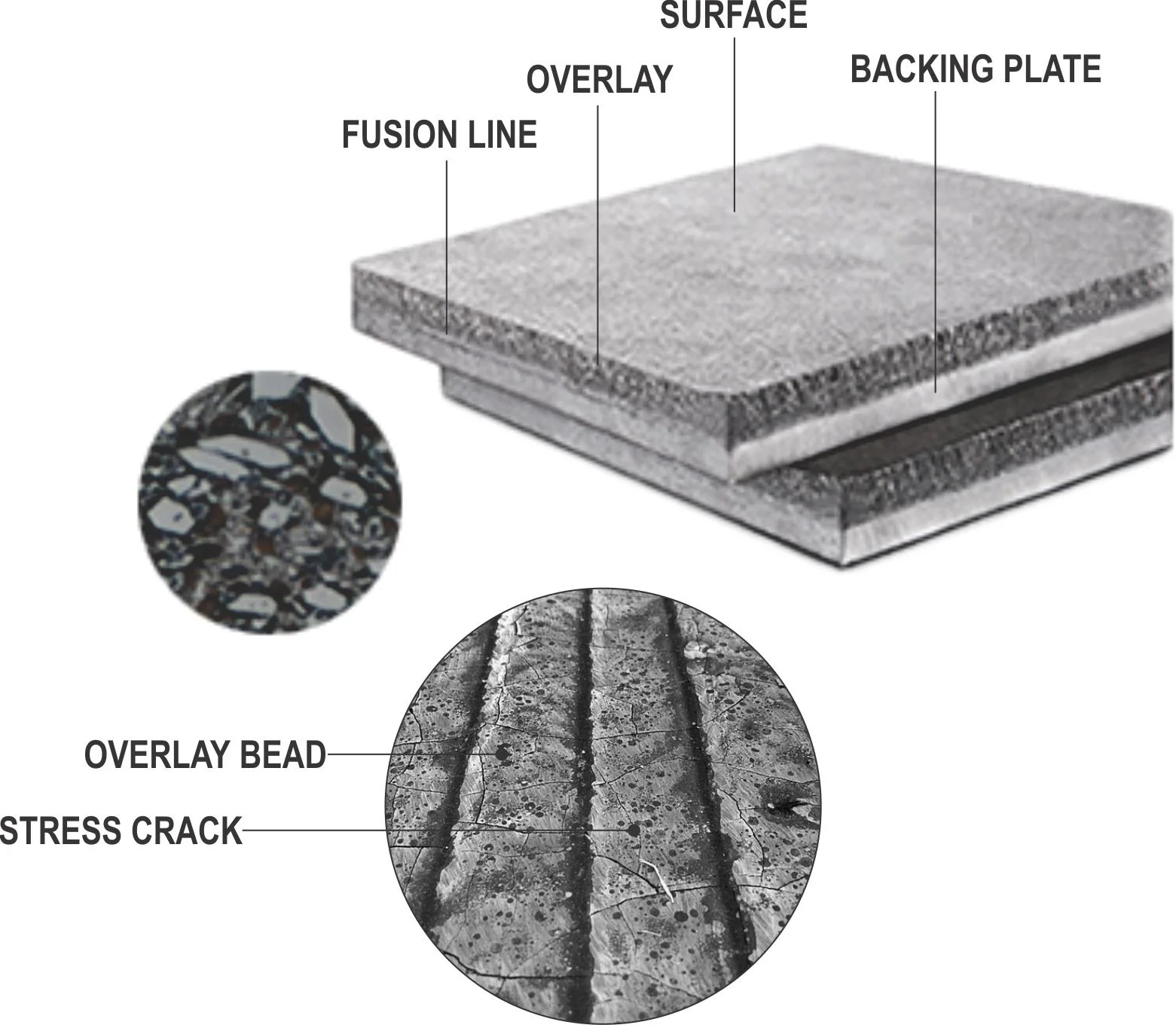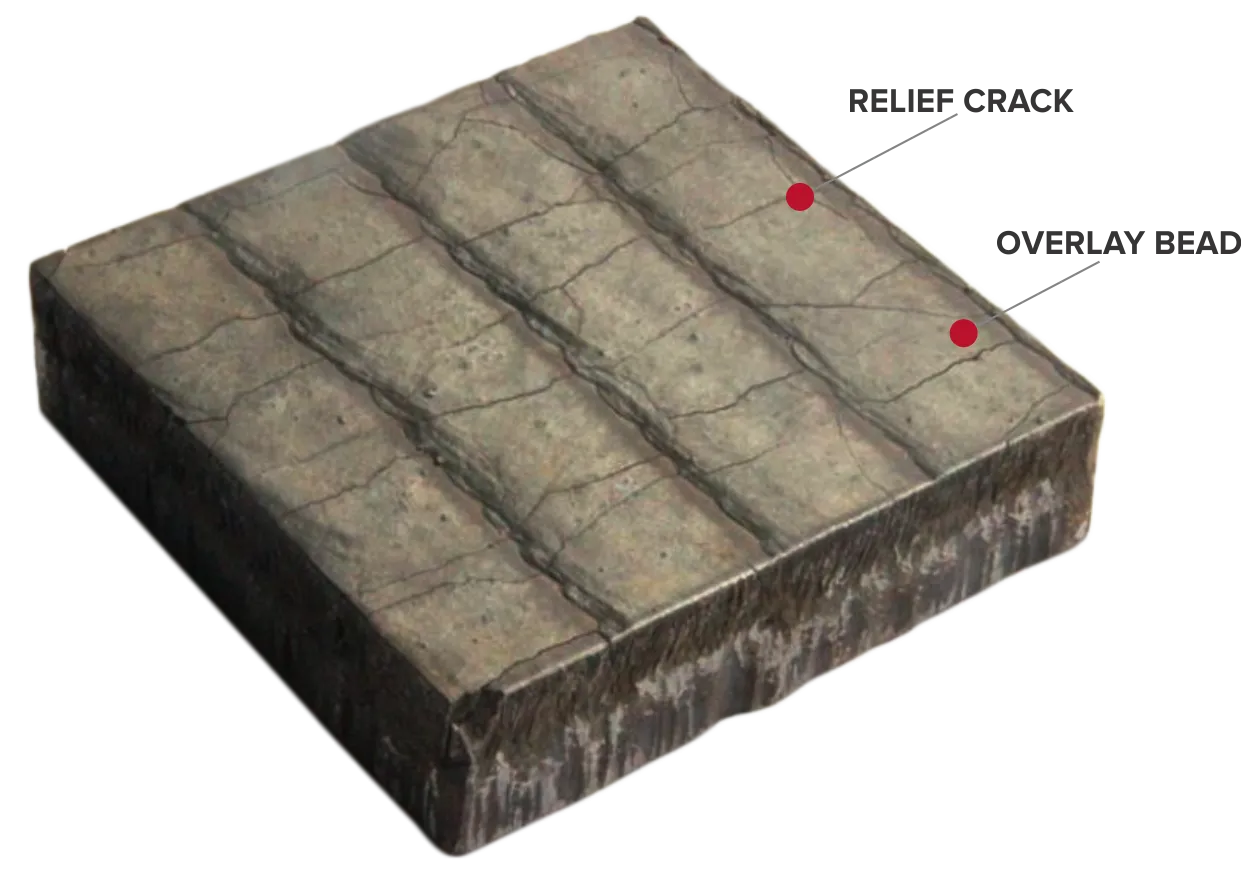
Chromium Carbide Overlay Wear Plate
High-performance cco plate with evenly distributed chromium carbide overlay on mild steel base.
Chromium Carbide Overlay Wear Plate
High-performance cco plate with evenly distributed chromium carbide overlay on mild steel base. macro-hardness 57-63 hrc, excellent wear resistance per astm g65. uniform thickness, flat surface, multiple grades for mining, steel, cement, and power industries. custom fabrication available.
High-volume primary chromium carbide evenly distributed on a mild steel base for exceptional abrasion resistance. Macro-hardness 57-63 HRC, uniform thickness, and flat surface ensure reliable performance in harsh environments. Multiple grades available for customized wear protection.
Chromium Carbide Overlay (CCO) plate is a bimetallic wear-resistant material manufactured by cladding a high-volume chromium carbide overlay onto a mild steel base plate. The carbides fuse seamlessly to the base, creating an even distribution that provides outstanding wear performance tested to ASTM G65 procedure A.
The overlay plate is manufactured by cladding an wear resistant material to a mild steel base plate. The high volume of rich carbides fuse to base plate and evenly distributed throughout the uniform overlay thickness, creating a bimetallic material with high wear resistance and good processability. The mild steel base plate could be welded or bolted, the overlay provides excellent wear resistance which ensures extended service life and durability of equipment and reduces maintenance costs. It is widely used in mining, iron&steel, port, cement, concrete, aggregate, asphalt, coal-fired power, metal recycling, glass production, sugar, dredging, foundry, pulp and paper industries. Different overlay grades are available to suit various working conditions.
With uniform plus-tolerance thickness and excellent plate flatness, CCO plate is ideal for applications requiring superior abrasion resistance and processability.

The overlay surface of CCO plate will consist of a series of beads with numerous hairline cracks in them. These properly spaced crosscheck cracks are a natural phenomenon and are beneficial to the material. The cracks propagate through the overlay and end at the fusion line.
Plasma burning, air arc, abrasive saw or water jet.
Our CCO overlay plate can be joined by welding the substrate to substrate using 309 weld wire/rod.
Using a press brake, forming should be perpendicular to the weld pass direction. Plate rolling should be performed in the directions of the overlay beads.
Overlay plates are versatile and tailored to specific wear challenges. Below are examples across industries.
Used in chutes, hoppers, and conveyor systems in mining or aggregate processing. CCO plates excel here, resisting material flow that erodes surfaces.
Ideal for high-stress areas like bucket lips and crusher liners in quarrying, where deep scratching and tearing occur.
Suitable for hammer mills and moderate-duty crushers. Products like Super-C® handle combined impact and sliding without cracking.
Applied in heavy-duty equipment like dragline buckets in mining, providing toughness against severe blows and abrasion.
In coal-fired power plants or incinerators, borocarbide overlays protect boiler tubes and ash handling equipment from heat and particle erosion.
In corrosive environments like acidic mining slurries or chemical processing, overlays provide dual protection against wear and chemical attack.
For fabrication, these plates can be cut via plasma, water jet, or abrasive saw; welded using compatible rods (e.g., 309 for CCO); and bent perpendicular to weld beads for forming.
